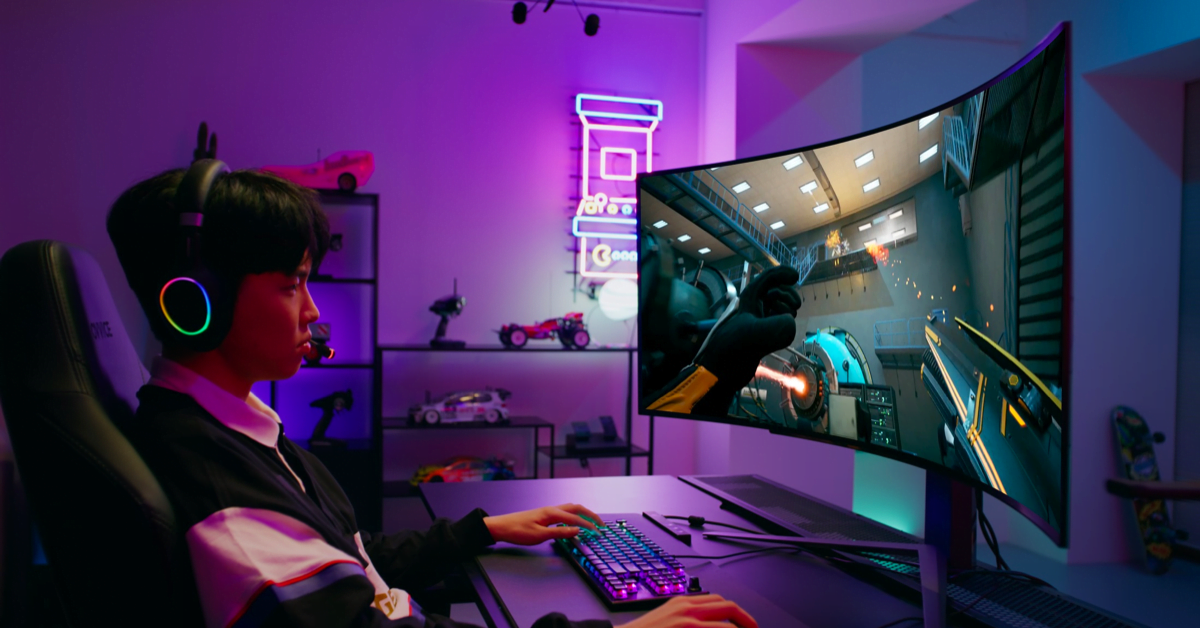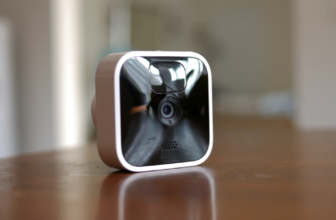
The future is here. It wouldn’t be surprising if, within a span of a few years, OLED overthrows IPS, VA, and high-refresh-rate TN panels to become the favorite display choice for PC gaming enthusiasts.
The 27-inch panel found in a host of new monitors, including the LG 27GR95QE-B under review, is inching close to perfection in terms of amalgamating the best features.
Previously, shopping for a gaming monitor required significant compromises. Achieving spectacular color, profound blacks, competitive refresh rates, high resolution, and impressive viewing angles all on one display was next to impossible. Conventional wisdom suggested IPS panels for brightly lit rooms, VA panels for darker environments, and TN panels if the utmost refresh rates were an absolute necessity, or if a budget-friendly display was in order.
However, OLED panels possess the potential to excel in all these aspects, provided you’re willing to invest. These panels have already claimed dominance in the luxury phone segment, thanks to their vibrant colors and deep blacks. I am partial towards my OLED television. But my experience in converting a 48-inch LG OLED TV into a dual-purpose desktop monitor for work and gaming highlighted a number of barriers. Overcoming desktop PC burn-in concerns, figuring out appropriate sizing and controls, and avoiding excessive auto-dimming are all challenges that need to be addressed.
The LG 27GR95QE-B, priced at $999, and its counterparts have made considerable progress. They’re almost ready to completely win me over, needing only a little more brightness, a warranty upgrade, and an appealing price drop.
The LG 27GR95QE-B, in particular, is a 26.5-inch, 2560 x 1440 OLED display that boasts a 240Hz refresh rate through DisplayPort 1.4 or either of its dual HDMI 2.1 ports. It offers support for Nvidia G-Sync, AMD FreeSync Premium, and standard 48–120Hz VRR at up to a downscaled 4K resolution for your PS5, Xbox, or streaming device. Playing The Touryst, a game that offers native 4K 120Hz on PS5, was a smooth experience when downscaled to 1440p.
The monitor has a straightforward USB hub with dual 5Gbps USB-A ports. It offers adjustability through raise, tilt, swivel, and pivot options on the included click-in stand, and comes with a small TV remote to toggle inputs, adjust brightness, and control volume for its 3.5mm headphone jack. It lacks a USB-C port for single-cable docking, unfortunately — laptop users will need to find alternative charging options.
The LG 27GR95QE-B is not the only monitor equipped with this display. Indeed, I’ve heard that the Asus PG27AQDM, which uses the identical LG OLED panel, offers slightly better brightness and additional features (like an integrated joystick to control the OSD). However, after three months of replacing my conventional 27-inch 1440p IPS screen with LG’s 27-inch 1440p OLED, it’s important to share the minimal compromises that remain.
As recently as April of this year, my everyday desktop monitor was a 27-inch Asus TUF VG27AQ. I chose it because Rtings praised it as one of the top all-around monitors of its time — except for poor HDR and the notorious “IPS glow” that makes blacks appear gray in dimly lit rooms. This was supplemented by a pair of aging Dell U2412M monitors oriented vertically to help me monitor Slack, Discord, Facebook Messenger, and whatever might replace Twitter next.
Previously, incorporating OLED meant overhauling my entire setup to accommodate at least a massive 34-inch monitor on my desk, if not a 42- or 48-inch TV. But with the LG monitor, a straight swap was possible: out with the 27-inch monitor, in with another. The only change required was moving my Synology NAS and mousepad slightly further to accommodate LG’s large V-shaped stand.
My first test was to see if I could discern any disruptive differences. Would it be possible to integrate this monitor seamlessly into my multi-purpose gaming and work setup without compromising its performance or needing to constantly care for the screen to prevent burn-in? I decided I would never manually turn off the monitor, hide my taskbar, or take any other preventive measures commonly recommended for OLED screens. I resolved to rely solely on the monitor’s built-in protections and observe the outcome.
However, there was one glitch. Within a few hours of my first workday, LG’s auto-brightness-limiting anti-burn-in mechanisms were already proving problematic. I’d refer you to a comprehensive explanation on TFTCentral if you’re interested in learning about ABL, ASBL, and TPC. Fortunately, they were less impactful on this review than I had initially anticipated. In short, the more the screen is covered with bright white objects, the more it dims — a serious issue for desktop work given that most websites and applications are predominantly white, even with dark mode enabled in your operating system.
Once I executed a firmware update through LG’s OnScreen Control application, the troublesome spontaneous dimming of my OLED screen ceased. For a quarter of a year, I have enjoyed an unwaveringly luminous display!
However, not every monitor using LG’s 27-inch OLED panel will share this experience. For example, with the Asus PG27AQDM model, this is a feature you must manually enable by switching on a ‘Uniform Brightness’ setting. However, with the firmware update, LG has set Uniform Brightness as the standard on the LG 27GR95QE-B model. This modification has further solidified OLED technology as an unparalleled leader in the display market.
To explain, Uniform Brightness signifies that LG is controlling the brightness level of the whole screen… and as you may know, these LG panels are not notoriously bright! It’s been reported that we’re looking at around 200 nits of brightness, a significant step down from the promised peak of 1,000 nits. (We’ll revisit this peak shortly.)
While I was working, I barely noticed the dimness. I never demand peak luminosity from my desktop monitors — late in the evening, my previous IPS screen typically rests around 100 nits, with a bump to 200 during daytime hours. However, the OLED’s lack of brightness becomes evident when my wife pulls back the curtains, revealing its inability to compete with daylight glare. Moreover, during leisure time for gaming or streaming Netflix, I often futilely attempt to brighten the display, only to discover it’s already at its maximum setting.
A potential issue for desktop use is LG’s WOLED subpixel configuration. It doesn’t perfectly align its red, green, blue, and extra white subpixels. This can sometimes result in slightly less sharp icons and text compared to conventional RGB stripe panels. But for me, this was never a major concern. It was only when I returned to my IPS screen three months later that I noticed a slight improvement in sharpness. However, even a 27-inch 1440p monitor placed less than two feet away from me does not provide a Retina-like display — neither OLED nor IPS technology can prevent rough pixel edges at such a pixel density (110ppi) and distance. This feels like a negligible compromise.
In almost every game I played, the OLED proved to be markedly superior. When I say “superior,” I’m referring to the sheer clarity it offers. It more closely resembles peering through a window into another world rather than merely staring at a screen.
As you likely know, OLED screens boast impressive contrast due to their true black levels. Their pixels create light and can entirely switch off this light; there’s no backlight involved, resulting in less fogging in darker scenes. They’re also highly responsive, providing crisp, clear motion surpassing all but the quickest LCD screens. Even the 120Hz OLED TV I attempted to use as a monitor couldn’t match the smoothness of this 240Hz model.
HDR can further enhance this clarity. It has often been described as lifting a haze, allowing dark and light elements to appear true, instead of compressing all colors in between. HDR also unlocks the panel’s nearly 1,000-nit peak. However, HDR continues to present problems on Windows, and unfortunately, this monitor is not exempt.
With the correct game, the results can be stunning. For example, Gears 5 begins with soldiers clad in chrome, descending from a helicopter through a rainbow and a sunlit waterfall, into dark caves illuminated by a glowing blue drone. Every part of this scene is visually impressive due to the contrasting light sources – the shine of armor, the dancing sunlight on the water, the sparks from a chainsaw – piercing the darkness.
In contrast, my old IPS monitor fails to provide such a realistic experience; the lights appear fake, and the dark caves are muddled gray due to the inadequate contrast of my old screen.
The game Ori and the Will of the Wisps offers a similar interplay of light and darkness, only here, Ori himself is a luminous creature, every movement a flash of blue. However, I started to observe that every time Ori’s powers lit up, the rest of the screen darkened slightly. When I began playing primarily bright HDR games like Forza Horizon 5 or The Touryst or Genshin Impact on PS5, it became apparent that LG’s 27-inch OLED panel lacked sufficient sustained full-screen brightness to create a convincingly illuminated scene. Executing a Genshin Impact ultimate attack resulted in an immediate dimming of the entire screen, unlike what I’ve experienced on my 65-inch LG OLED television.
There was even an unusual incident in Halo Infinite where a grenade thrown near my feet caused the entire monitor to go black until I restarted it. But, this only happened twice, and it might not be related to the monitor or HDR at all. Perhaps it’s a video driver glitch? I’m only mentioning it in case you encounter the same issue — it’s an unprecedented event in my experience with monitors.
Regardless of these minor drawbacks, I prefer gaming on this monitor over even my LG OLED television. It’s incredibly immersive to have such a clear image so close to me.
When it comes to movies and TV shows, the experience is a bit different, but it’s not exactly LG’s fault. Almost all streaming services on Windows are currently throttled. Despite my efforts, I couldn’t play my Vudu copy of Blade Runner 2049 in HDR, let alone 4K, and Netflix was limited to 1080p HDR during my Windows tests, regardless of the browser (or app) I used. The same went for Amazon Prime Video and Disney Plus. Viewing 1080p on a 1440p monitor does not provide optimal streaming quality. The only exception was YouTube, which offered an excellent performance at 1440p HDR, 4K HDR, and even 8K HDR on this monitor (though slightly aliased due to downscaling), making it puzzling why paid subscriptions can’t offer the same quality (the answer is DRM).
Thankfully, the LG 27GR95QE-B model’s dual HDMI 2.1 ports allowed me to easily connect my Chromecast or PS5 and stream 4K HDR video from there. Watching the latest season of The Witcher, with its many candlelit scenes, in downscaled 4K was an exceptional experience, even if it’s slightly superior in native 4K on my living room OLED.
I do wish, however, that I didn’t have to frequently switch devices and modes with this monitor. I ended up adding a Windows HDR toggle button to my Stream Deck because I’d rather not deal with the HDR mode’s auto-dimming during desktop use. I would also likely need to set up a Nvidia G-Sync toggle; a few games, such as Diablo IV, cause the monitor to flicker in its variable refresh mode. (LG’s monitor menu does warn about this, and you can disable VRR there, too.)
Despite these minor issues, my main reservations are brightness, price, and LG’s lack of a comprehensive warranty covering burn-in. This is where things get a bit complicated.
In theory, we’re reaching a significant milestone for OLED desktop monitors. These 27-inch panels will maintain a consistent, albeit dim, brightness indefinitely. One would think LG has confirmed they won’t burn-in at the 200-nit mark, right?
However, LG has not confirmed this. LG’s third-party spokesperson But until then, I’m sticking with IPS.





